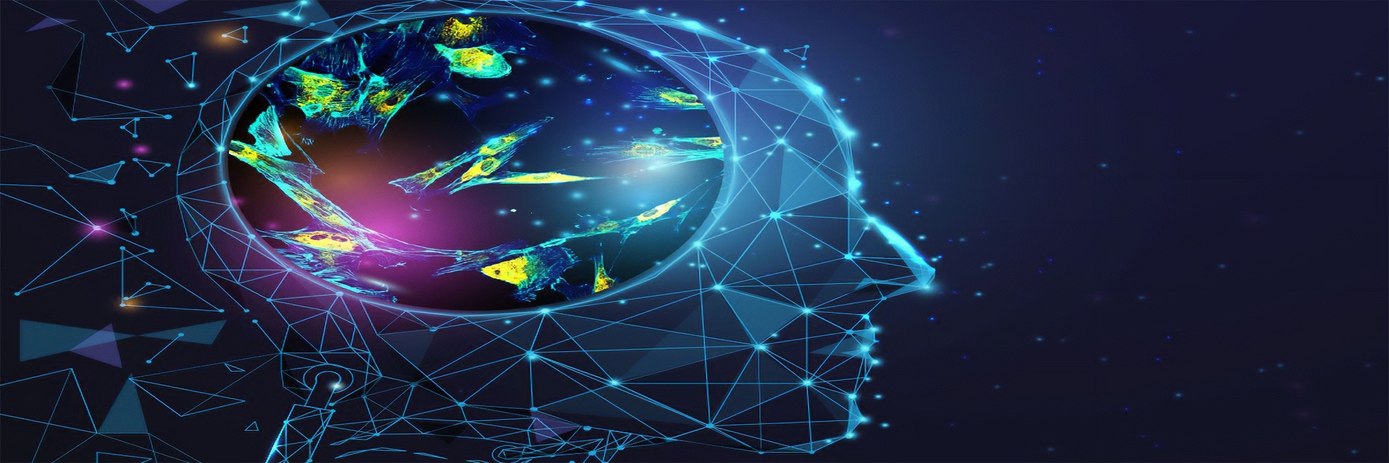Improved cellular imaging technologies are providing researchers with more robust datasets while maintaining high data quality. While this is a plus for drug discovery workflows, it also presents its own challenges: how to evaluate the large datasets in a timely manner and obtain deeper insights from the expanded data. Artificial intelligence is providing a way to meet these challenges.
Artificial intelligence (AI) is the science of developing computers that can use data to make human-like decisions and take action. Machine learning (ML) is a branch of AI focused on how a machine learns from data. ML data analysis automates model building using human-designed algorithms and training data to evaluate new information, make decisions, and even adjust its own models.
Deep learning (DL) is a type of ML that teaches the computer to perform human-like tasks such as recognizing speech and images or predicting outcomes. It does so by using multiple algorithms that interconnect to form an artificial neural network (ANN) that can evaluate immense datasets and look for deep patterns. DL is one of the most promising areas of AI for cellular image analysis and drug discovery.
Together with high throughput workflow advances and the generation of ever larger datasets, advances in computing power and ML/DL can assist in faster and deeper data evaluation, aiming to, eventually, improve the drug discovery process.
Applications and challenges
The use of ML and DL in imaging and drug discovery has steadily expanded over the last decade and produced new applications, such as:
- De novo molecule design
- Predicting a molecule’s structure-activity relationship
- Predicting reactions in retrosynthetic analysis
- Many others
ML/DL can also help researchers address perennial challenges in the drug discovery process, including the following.
Reduce the time and costs for drug development
Drug discovery takes an extraordinary amount of time and money to complete. The use of ML/DL in high content screening of thousands of potential drug candidates may reduce the time, personnel, and costs needed to complete the screening and data analysis. For example, ML/DL can complete image analysis and data extraction for a field or well in minutes, sometimes even seconds, with only one scientist overseeing the process.
Gain novel insights early
ML/DL is being used to uncover deep insights from cellular imaging that are not obtainable by traditional image analysis. For instance, complex image analysis tasks are needed to fully evaluate more physiologically relevant cellular models such as spheroids and organoids. ML/DL methods with their deep neural networks can use gathered data to automatically improve segmentation and classification in such complex models.
Increase productivity
ML/DL can help reduce the amount of time required to conduct assays and data analysis. The time savings may also contribute to increased productivity, for example, by freeing up time for more assays and allowing scientists to focus on other important aspects of their research.
Reduce human bias and error
Conventional imaging analysis is prone to human bias and error, especially in the segmentation of multifaceted images. Researchers are developing DL approaches that could automate segmentation or perhaps eliminate the need for it entirely, thus supporting scientists in reducing bias and error in data analysis.
Future outlook
Artificial Intelligence, Machine Learning and Deep Learning are being used more and more in drug discovery laboratories to help overcome the challenges inherent in cellular imaging analysis. Many companies, universities, and foundations are focused on continuous improvement and advancement of ML/DL applications in biomedical fields. A few examples are:
- The Broad Institute is exploring a range of ML/DL applications including 3D organ modeling, antibiotic discovery, and others.
- The University of Tartu in Estonia is developing ML/DL applications in computational biology and neuroscience.
- Technology providers like Revvity are using ML/DL to provide advanced data analysis capabilities with their imaging software.
Thanks to scientists and software such as these, drug discovery researchers are making strides toward more efficient and timely workflows by pairing high-throughput imaging technology and advanced ML/DL applications for data analysis. This could signal positive news for the advancement of research and development of life-saving or life-improving tools for millions of people facing devastating diseases and disorders.

































